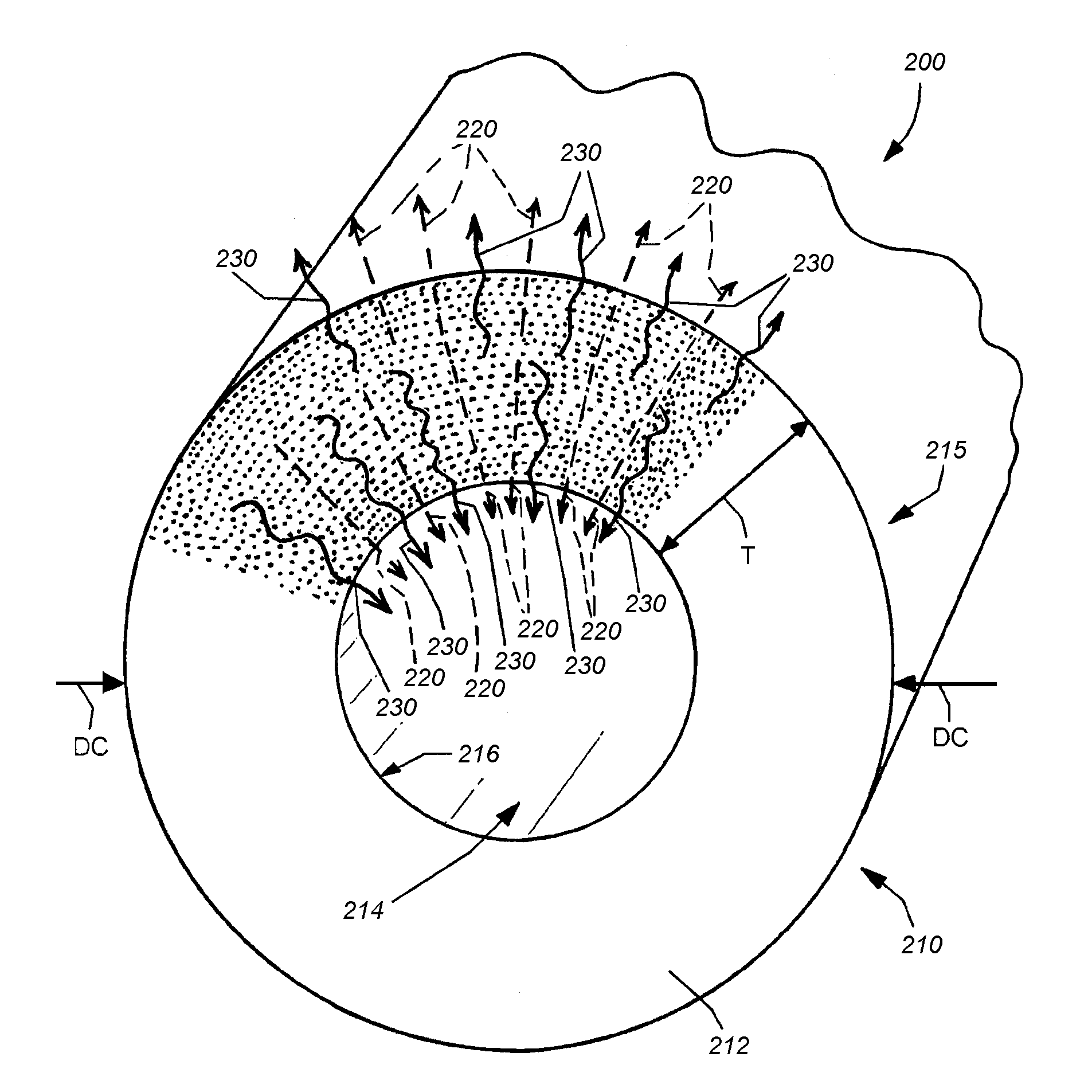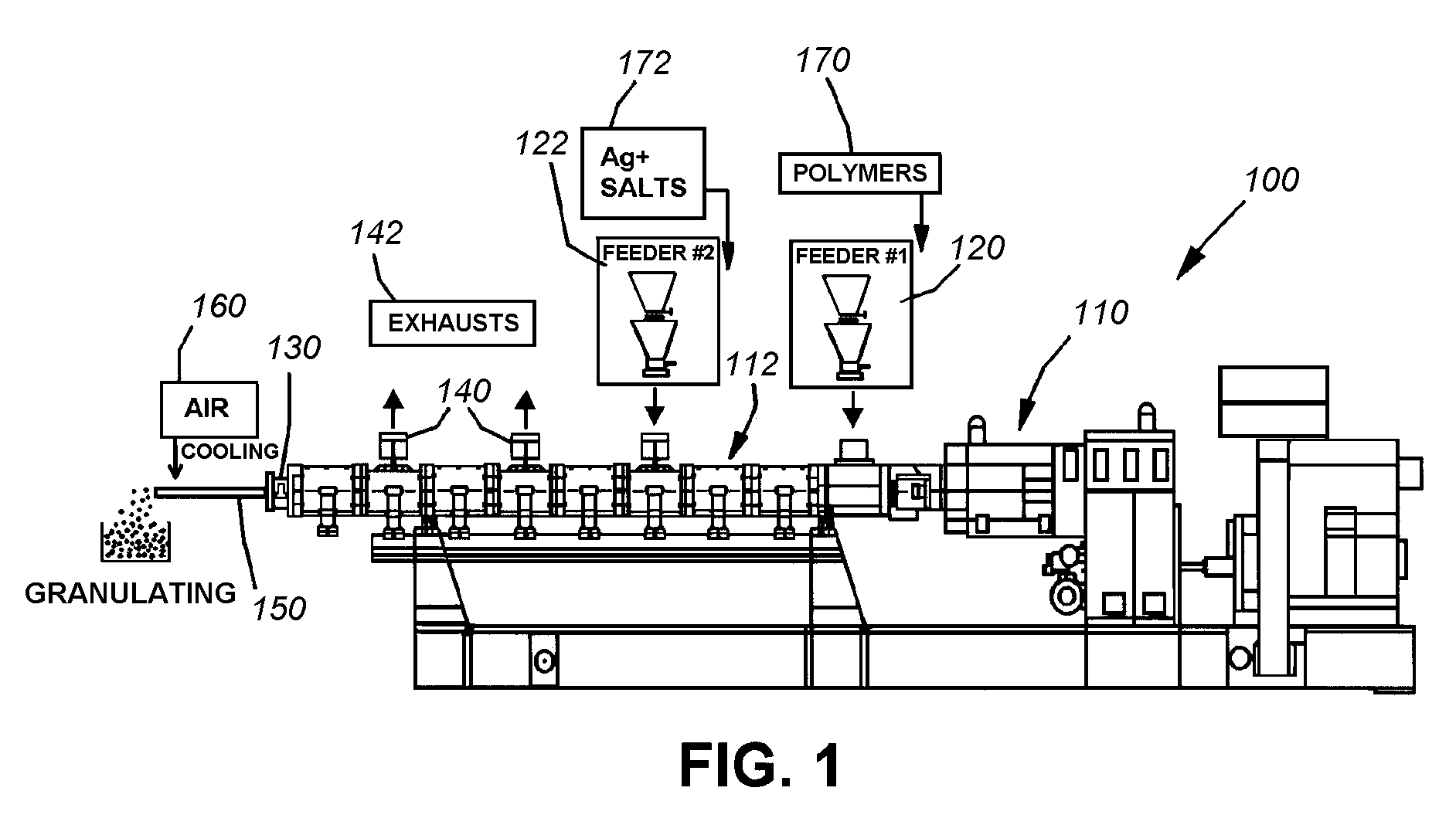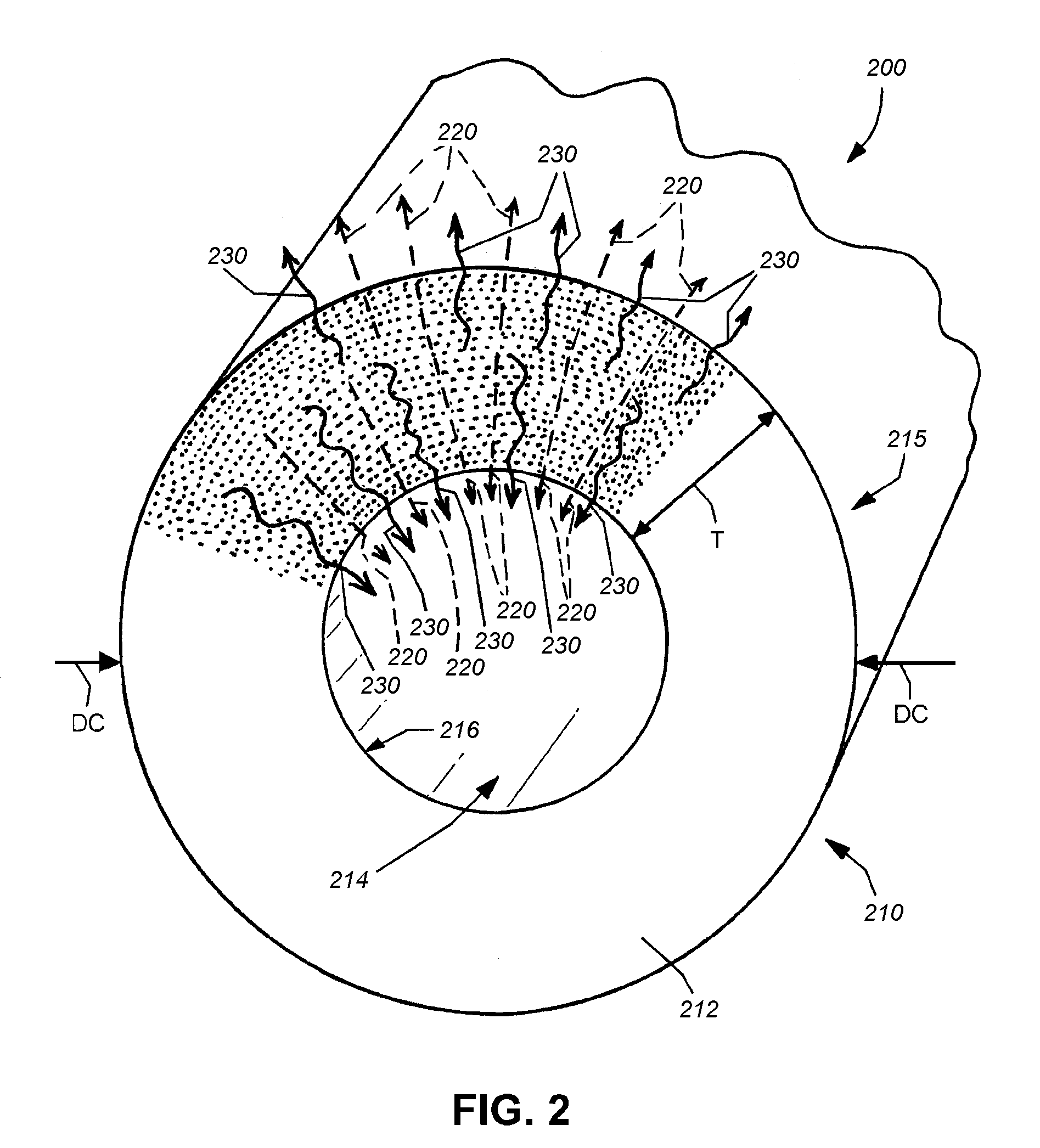Antimicrobial material and method for making the same
a technology of antimicrobial materials and polymeric materials, applied in the direction of prosthesis, catheters, paints with biocides, etc., can solve the problems of limiting the performance of these powerful coatings, affecting the performance of the coating, and affecting the patient's health, so as to reduce infections and reduce cost. the effect of minimal increas
- Summary
- Abstract
- Description
- Claims
- Application Information
AI Technical Summary
Benefits of technology
Problems solved by technology
Method used
Image
Examples
Embodiment Construction
[0030]FIG. 1 illustrates a complete, one-stage melt process for the exemplary antimicrobial polymeric material according to an illustrative embodiment of this invention. The process employs the depicted twin-screw compounding extruder 100. The basic operative components of the extruder 100 are well-known in the art, and not described in further detail. In general, the mechanical system of the extruder 100 is driven by a motorized drive 110. This drive rotates twin feed and mixing screws (not shown) housed within a series of interconnected, heated mixture housings 112. The housings 112 are connected to a pair of feeders (feeder #1 (120) and feeder #2 (122)), each of which allow a predetermined component of the mixture to be added to the mix. The fed components are completely mixed as they are driven downstream toward the extrusion die head 130. A plurality of exhaust ports 140, allow removal of any residual mixture in the extruded material. The extruded structure 150, composed of the...
PUM
| Property | Measurement | Unit |
|---|---|---|
| distance | aaaaa | aaaaa |
| depth | aaaaa | aaaaa |
| hydrophilic | aaaaa | aaaaa |
Abstract
Description
Claims
Application Information
 Login to View More
Login to View More - R&D
- Intellectual Property
- Life Sciences
- Materials
- Tech Scout
- Unparalleled Data Quality
- Higher Quality Content
- 60% Fewer Hallucinations
Browse by: Latest US Patents, China's latest patents, Technical Efficacy Thesaurus, Application Domain, Technology Topic, Popular Technical Reports.
© 2025 PatSnap. All rights reserved.Legal|Privacy policy|Modern Slavery Act Transparency Statement|Sitemap|About US| Contact US: help@patsnap.com



